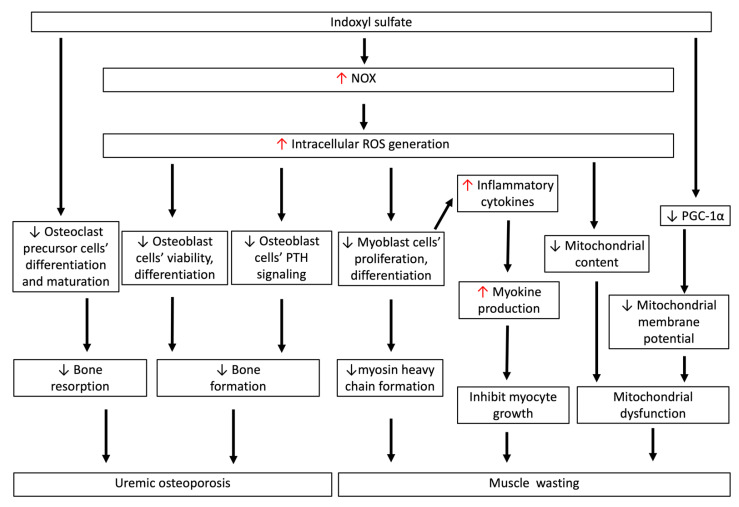Figure 4.
IS-induced oxidative stress is associated with uremic osteoporosis and muscle wasting. IS directly inhibits the differentiation and maturation of osteoclast precursor cells. IS inhibits cell viability and differentiation, and induces apoptotic cell death of osteoblasts through increasing intracellular ROS generation. Such ROS production also disturbs osteoblastic PTH signaling, which impedes bone formation and related mineralized matrix deposition processes. This low-turnover bone disease in early-stage CKD is characteristic of reductions in both bone resorption and formation rates, and is called uremic osteoporosis. IS-induced ROS generation directly inhibits myoblast cell proliferation and differentiation to myosin heavy chain, and also induces myokine secretion, which inhibits myocyte growth. In myoblast cells, IS-induced ROS generation reduces mitochondrial content in early CKD, and decreases PGC-1α production in myoblast cells, lowering the mitochondrial membrane potential. The decrease in myosin heavy chain, myocyte growth, and mitochondrial dysfunction contributes to the pathogenesis of muscle wasting in CKD. CKD: chronic kidney disease; IS: indoxyl sulfate; ROS: reactive oxygen species; PGC-1α: peroxisome proliferator-activated receptor gamma coactivator-1α.

